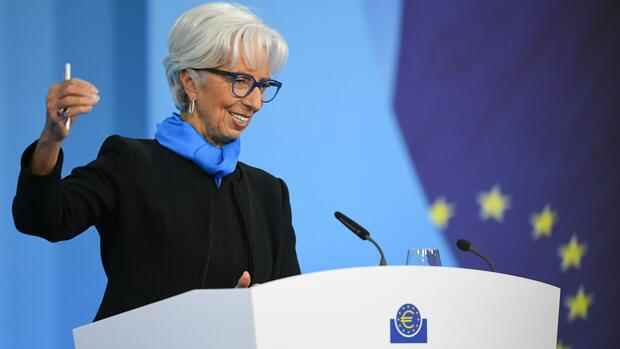Experts such as Stefan Krämer, chief economist at Commerzbank, refer to the last full trading week of this year, which starts on Monday, as the “week of the central banks”. Then it will show how differently the central banks are trying to get a grip on the massively increased inflation figures. It was announced on Friday that consumer prices in the US rose 6.8 percent in November.
Both the European Central Bank (ECB) and the US Federal Reserve, the Bank of England and the central banks in Switzerland and Japan will comment in the new week on how to proceed against the background of the recent sharp rise in inflation.
However, central banks are handling the challenge differently. While the ECB still regards the topic of inflation as temporary, Fed Chairman Jerome Powell no longer describes the increase as just a temporary phenomenon.
Top jobs of the day
Find the best jobs now and
be notified by email.
The reactions of the central banks in the coming week are likely to be correspondingly different. At the ECB, stockbrokers expect bond purchases to continue into March of next year and to remain at the same level as in the current fourth quarter. Only then do experts expect a slight change in course.
“A key decision and, from the point of view of the Governing Council, an important signal should therefore be the announcement that the PEPP pandemic purchase program will be ended at the end of the first quarter of 2022,” said the Helaba experts. ECB boss Christine Lagarde had already advised such an approach.
The US Federal Reserve is leading the way
The situation at the US Federal Reserve is completely different. The process of change in monetary policy has been underway there for some time.
Commerzbank chief economist Krämer believes that this could mean an increase in monthly bond purchases to 30 billion dollars for the central bank meeting next week. It would be double compared to the previous level.
If things continued at this rate, the US Federal Reserve’s bond purchase program would be over at the end of March. “From the point of view of investors, the way would then be free for the first rate hike in the middle of the year,” says Krämer.
The capital market experts have now decided on how to proceed. According to their estimates, the expected rate hike is expected to be 80 basis points at the Bank of England, an average of 66 basis points at the Fed and around 15 basis points at the ECB.
“They seem to be expecting the two big central banks, the Fed and the ECB, to bow to public pressure – with the aim of asserting their credibility as guardians of price stability,” says Edgar Walk, chief economist at Metzler Asset Management.
Consequences for the financial markets are already becoming apparent, but the experts differ widely in their interpretation. A prime example is the future development of the US dollar against the euro.
In the past six months, the dollar has grown by a good eight percent. At the end of the week, one euro cost $ 1.1274. But while Commerzbank chief economist Krämer expects an exchange rate of 1.08 dollars in a year, Dorothea Huttanus from the cooperative DZ Bank expects it to be 1.18 dollars.
Car stocks that are prone to volatility
The great uncertainty in the forecasts is likely to be reflected in the stock market again in the coming week. The nervousness is still great there. “The market participants do not yet know how to properly classify the current crisis, and there is still uncertainty about the effects on economic development,” says Sven Streibel from DZ-Bank.
The shares of automakers and manufacturers of capital goods have fluctuated particularly sharply recently. Both industries would be particularly affected by the possible effects of a possibly worsening corona crisis on the development of demand and supply shortages.
If, however, there are signs of easing in the near future, both sectors could be among the big winners in the remaining trading days until the end of the year. Edgar Walk from Metzler Asset Management sees the first signs of this. “In the past few days there have been more and more voices from companies signaling an easing of the supply situation”.
More: Will inflation stay high? These eight graphics show the arguments for and against
